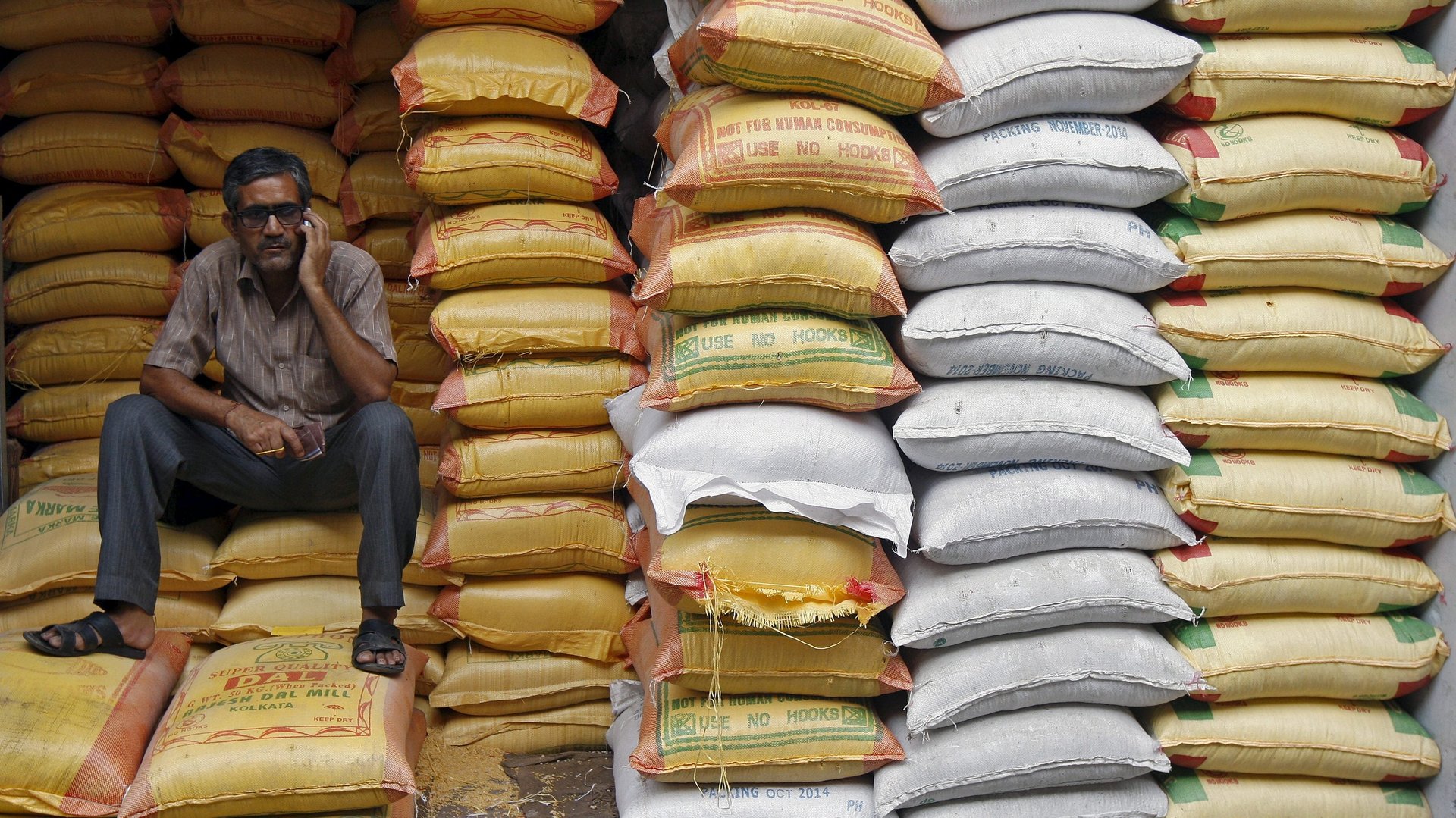India’s granaries are overflowing, but it still has a hunger problem
The contrast between India’s growth story and its rising inequality appears to be playing out year after year.


The contrast between India’s growth story and its rising inequality appears to be playing out year after year.
The country ranks 101 among 116 countries on the Global Hunger Index (GHI), a peer-reviewed annual report jointly published by aid organisations Concern Worldwide and Welthungerhilfe. Its score of 27.5 puts its hunger crisis in the “serious” category, the report released on Oct. 14 said.
India’s ranking fell from 94 among 107 countries in 2020. It has remained low over the years despite a surplus of foodgrain.
The report also notes that the latest undernourishment data don’t reflect developments of 2021. “The full effects of the Covid-19 pandemic will likely only be reflected in the GHI data in the coming years,” it said.
The Indian government called the ranking’s methodology “shocking” and “unscientific.” But the widespread problem of hunger and malnourishment tracks with growing inequality in India.
India’s richest and poorest
The ranking reflects the state of affairs in the same year that India’s richest man, Mukesh Ambani, joined the $100-billion club and 28 Indian startups turned unicorns.
India, meanwhile, added the most number of poor people globally in 2020, according to the US think tank Pew Research Center’s report in January. This reversed India’s gains in greatly reducing absolute poverty numbers from 340 million in 2011 to 78 million in 2019.
The pandemic looks set to erode the gains made on the food security and hunger-eradication front.
Why does India have a hunger problem?
While India’s overall score on the GHI has improved from 38.8 in 2000 to 27.5 this year, it is still home to 189.2 million undernourished people, the largest in the world, according to The State of Food Security and Nutrition in the World report brought out by the UN’s Food and Agriculture Organization (FAO) for 2020.
Researchers have noted that India’s food insecurity has risen in tandem with stocks in the granaries. According to the FAO’s report, “the prevalence of moderate to severe food insecurity in India rose by about 6.8 percentage points in 2018-20,” Vaishali Bansal, a research scholar at the Centre for Economic Studies and Planning at the Jawaharlal Nehru University, wrote in The Indian Express newspaper. Data suggest that the number of people staring at moderate-to-severe food insecurity has risen by about 97 million since the outbreak of Covid-19.
“The irony is that this happened when the government had an unprecedented 100 million tonnes of food grains in its godowns—larger than the food stocks of any country,” Bansal said.
This, then, points to a larger policy problem of access to food and fixing the leakages in India’s public distribution system.
Access to welfare schemes
In June 2019, the government announced the “one nation, one ration card” scheme, allowing anyone with a legitimate claim to receive free or subsidised grain, sugar, and pulses from the government irrespective of location. This was meant to help migrant workers.
The scheme, however, is yet to see nationwide acceptance, differing in the number of transactions from state to state, according to an Oct. 7 analysis by rural media platform Gaon Connection.
A major hurdle in the path of food security has been Aadhaar, India’s biometric-linked identification number. To access welfare schemes, Indians need to have this unique ID linked to their respective accounts like ration cards.
Lawyers and activists have petitioned India’s supreme court alleging that 20-40 million ration cards were invalidated because they were not linked to Aadhaar. In several states, reports suggest that being unable to link the Aadhaar and manual entry errors have led to people being denied essential foodgrains, and has eventually led to starvation deaths.